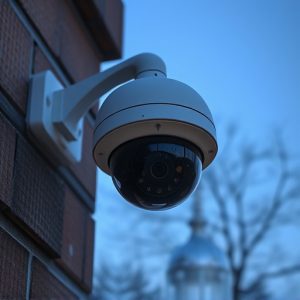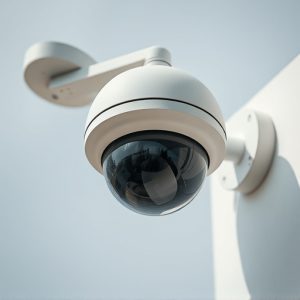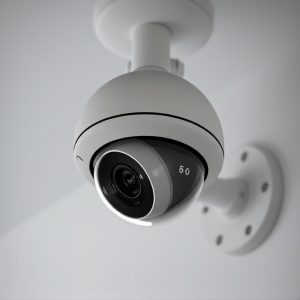Unveiling Discreet Surveillance: Everyday Objects as Hidden Cameras
Fake Dome and Bullet cameras offer distinct advantages in discreet surveillance. Fake Dome cameras b…….
Fake Dome and Bullet cameras offer distinct advantages in discreet surveillance. Fake Dome cameras blend seamlessly into surroundings for minimal detection, while Bullet cameras provide robust construction and wide field of view for broader coverage. Choice depends on specific needs, balancing covert operations with enhanced coverage. For covert ops, Fake Dome excels; for wider areas, Bullet cameras are preferred. Both transform everyday objects into high-tech monitoring tools, offering strategic placement for better security and comprehensive footage without compromising privacy, though legal considerations must be respected.
“Uncover the art of discreet surveillance with our comprehensive guide on tiny camera concealment. Explore the world of Fake Dome and Bullet Cameras, two innovative options offering unparalleled discretion. Learn how everyday objects can double as hidden cameras, revolutionizing personal and professional security. Discover the benefits of plain-sight surveillance while navigating ethical boundaries. From creative solutions to legal considerations, this guide ensures you’re informed about the latest in concealed camera technology.”
- Understanding Fake Dome and Bullet Cameras: Unveiling the Discreet Options
- Everyday Objects as Cameras: A Creative Approach to Surveillance
- Advantages of Using Concealed Cameras in Plain Sight
- Ethical Considerations and Legal Aspects of Hidden Camera Placement
Understanding Fake Dome and Bullet Cameras: Unveiling the Discreet Options
Fake Dome and Bullet cameras are both popular choices for discreet surveillance, each offering unique advantages in camera concealment. Fake Dome cameras, as the name suggests, mimic the appearance of a standard light fixture or dome, making them virtually invisible to casual observation. Their design allows them to blend seamlessly into any environment, from homes to offices, without drawing attention. On the other hand, Bullet cameras are designed with a compact, cylindrical shape that can be easily mounted on walls or ceilings, providing a more obvious yet still discreet presence.
While both types offer high-quality video surveillance, the Fake Dome camera excels in its ability to maintain an unassuming profile, making it ideal for situations where minimal detection is crucial. Bullet cameras, however, are often praised for their robust construction and wide field of view, which can be beneficial for larger spaces or areas requiring enhanced coverage. The choice between the two depends on the specific needs of the surveillance setup: whether a truly covert operation is required or a more visible but still discrete solution will suffice.
Everyday Objects as Cameras: A Creative Approach to Surveillance
In today’s world, surveillance has become an integral part of our daily lives, often concealed within everyday objects that we take for granted. One innovative approach to this is the use of tiny cameras disguised as regular items, offering a creative and subtle solution for those seeking a more discreet form of monitoring. These miniature devices, such as fake dome or bullet cameras, are designed to blend seamlessly into their surroundings, making them ideal for various applications.
Everyday objects like light fixtures, power outlets, or even plant pots can be transformed into high-tech surveillance tools. The fake dome camera, with its unassuming appearance, can be easily mounted on walls or ceilings, capturing footage without drawing attention. Similarly, bullet cameras, often used in security systems, can be strategically placed to monitor entry points or common areas, providing a level of protection and peace of mind that is both subtle and effective. This creative use of technology opens up new possibilities for enhancing security measures while maintaining an aesthetically pleasing environment.
Advantages of Using Concealed Cameras in Plain Sight
Using tiny, concealed cameras embedded in everyday objects offers numerous advantages over traditional camera setups. One of the key benefits is their discreet nature; these cameras can be placed in plain sight, such as within a fake dome or bullet-shaped housing, making them virtually invisible to the untrained eye. This stealthy approach eliminates the risk of drawing attention or raising suspicions, which is particularly valuable for surveillance and security purposes.
Additionally, concealed cameras provide a more comprehensive view and coverage area due to their strategic placement. Unlike fixed or visible cameras that may have limitations in terms of angle and range, these tiny devices can be positioned creatively, offering versatile and dynamic monitoring solutions. This flexibility ensures better quality footage from multiple angles, making them ideal for environments where natural surveillance is desired without compromising privacy.
Ethical Considerations and Legal Aspects of Hidden Camera Placement
The use of hidden cameras, especially in everyday objects like fake dome or bullet cameras, raises significant ethical and legal questions. While these devices can offer enhanced security and surveillance capabilities, their discreet nature also invites concerns about privacy invasion. It’s essential to understand that placing a camera in a hidden location without consent is generally considered unethical and may violate individual rights.
Legally, the acceptability of hidden camera placement varies by jurisdiction. Some regions have strict regulations regarding surveillance, particularly when it comes to public spaces or private properties without explicit permission. Using these cameras for nefarious purposes, such as invading privacy or committing crimes, is illegal and can lead to severe consequences. However, legitimate use cases, like security monitoring in residential areas or businesses, should adhere to local laws and respect the privacy of individuals caught on camera.
In conclusion, both Fake Dome and Bullet cameras offer unique advantages as concealed surveillance solutions. While each has its strengths, the choice between them depends on specific needs and preferences. The creative potential of everyday objects as cameras is undeniable, providing an innovative approach to security. However, it’s crucial to balance the benefits with ethical considerations and legal boundaries, ensuring responsible and lawful camera placement. By understanding these factors, individuals can make informed decisions, leveraging technology for enhanced safety without compromising privacy.


